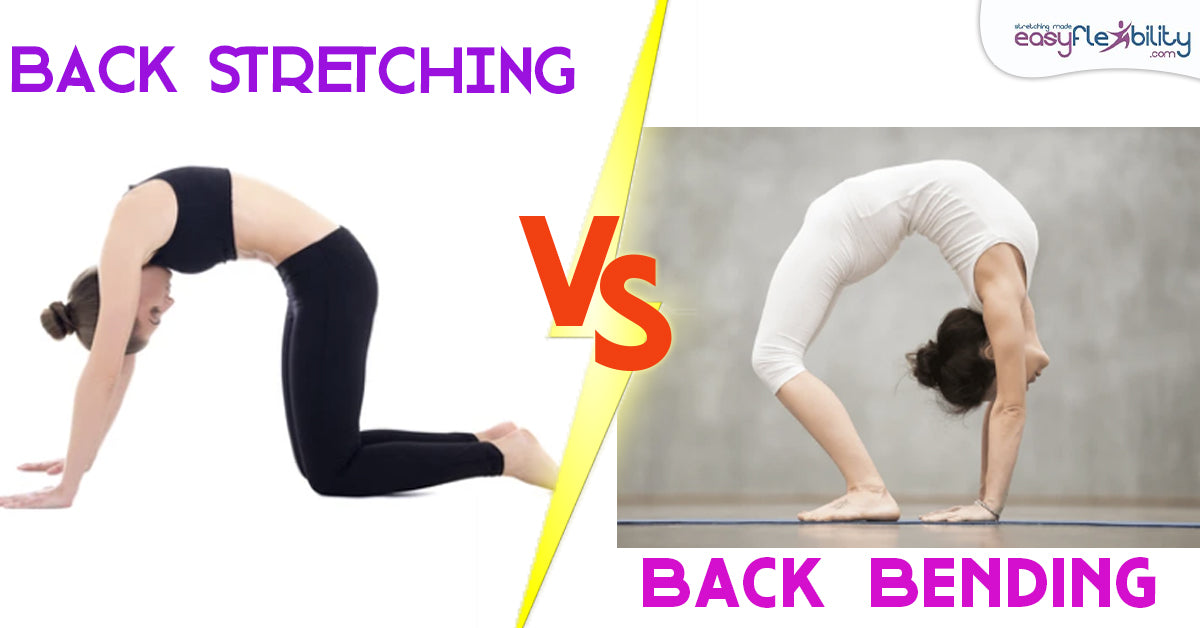Lower Back Spasms During Arabesque and How to Prevent Them
Posted by Paul Zaichik on

Lower Back Spasms During Arabesque and How to Prevent Them
One of the questions I got when discussing the Arabesque was lower back spasms experienced by many dancers. This is especially true of the beginning students, but this can also apply to the advanced students, especially if multiple performances follow each other closely, or there is a special Arabesque requirement such as in specific choreography.
In Arabesque position the muscles contract in short range. Short range is not the strongest range for a muscle, the strongest range for a muscle is middle range. For example, if you are doing a bicep curl your muscles do not like to contract when your hand is close to the shoulder, and they do not like to contract when your arm is almost extended, those are the weaker positions, the long range, and the short range. Contraction of the lower back muscles in the Arabesque is a short range.
There are two ways to solve this issue:
- Antagonist short range conditioning exercises
- And flexibility exercises

Scroll down to try a special FREE exercise below which will improve your Arabesque & Attitude Derriere in minutes!
You see, the muscle begins to resist long before its end range, for example, if you are stretching your Rectus Abdominis, the Obliques and Psoas Minor, and you need flexibility in those muscles, they begin to pull back before the end range. In other words, when you go into complete hyperextension for your Arabesque and you go to the end of that flexibility, that is not where the muscles begin to pull your body back down and forward, they begin to pull your body back down and then forward long before that.
What does all this mean? It means that if you have 90-degree hyperextension in your lower back and you are trying to contract the Spinal Extensors at 90 degrees, the Spinal Flexors will resist. However, if you take the Spinal Flexors to about 110 degrees, sometimes more, sometimes less, they will not resist at 90 degrees.

So, the more flexibility you have, the easier it is going to be on your back muscles to hold your spine in proper position without the pain, without the clamps, without a chance of an injury.
Keep in mind, that if you have a specific angle where you are doing an assisted stretch, or relax stretch, for example cobra, you cannot expect the same angle to be held in an Arabesque position. You would expect a lesser angle to be held actively as opposed to the one that you can do passively.
Keep in mind, that if you have a specific angle where you are doing an assisted stretch, or relax stretch, for example cobra, you cannot expect the same angle to be held in an Arabesque position. You would expect a lesser angle to be held actively as opposed to the one that you can do passively.
Want to improve your Arabesque Instantly? Try this Zaichik Stretching Technique called ~Discernment~
SIGN UP BELOW TO GET 2 MORE PROGRESSIONS OF THIS EXERCISE FREE - TO HELP IMPROVE YOUR ARABESQUE!
Perform an Arabesque on both sides and remember the height of your leg. Take pictures if you like.
- Now do the ~Discernment~ ZST for 3 sets of 3 repetitions.
- Each repetition has two parts as demonstrated in the video.
- The first part is called the Leverage and the second part is called the Target.
- Come up to a cobra position as Leverage, contract your lower back and lift your hips slightly off the floor with a tailbone aiming toward the ceiling, as you drop the hips back down use your hands to press up higher.
- Do this 3 times pressing up a little bit higher each time.
- Do 3 sets of 3 repetitions resting for 10 to 30 seconds between each set.
When done try your Arabesque one more time on each side and see the difference!
This exercise has progressions to two more levels, Intermediate and Advanced. Sign up to get two more levels by email.



Attitude Derrière or Back Attitude and Arabesque are Ballet/Dance positions usually strength trained via bar assisted leg lifts into the technique. The flexibility is attained via relaxed stretches.

This program takes a different approach.The flexibility resistance to these elements comes from medial hip rotators, hip flexors of the lifted leg and flexors of the core. Posterior tilters of the pelvis also offer resistance through the standing leg.
Watch The Anatomical Muscle Animation of The Arabesque and The Attitude Derriere
Unlike the standard time consuming passive stretch method, this routine employs Kinesiological Stretching techniques. Each of the muscles that prevent the successful Attitude Derriere and Arabesque is separated out and quickly lengthened, using one of its own actions against the other. Because no action is held for long, the stretch reflex is avoided and results are seen right away.

Since in Arabesque and Back Attitude it's the opposite muscles that hold the pose to the one's being stretched, reciprocal inhibition techniques are intervened with kinesiological stretches to master the skill even faster. You'll be surprised how fast easy results come using this method.

Get your Arabesque and Attitude Derriere routine today!
© ElasticSteel Corp., EasyFlexibility, Paul Zaichik, et. El., 2022. No part of the materials available through ElasticSteel.com, EasyFlexiiblity.com, site may be copied, photocopied, reproduced, translated or reduced to any electronic medium or machine-readable form, in whole or in part, without prior written consent of Paul Zaichik EasyFlexibility.com, Elasticsteel.com.. Any other reproduction in any form without the permission of Paul Zaichik EasyFlexibility.com, Elasticsteel.com is prohibited. All materials contained on this site are protected by United States copyright law and may not be reproduced, distributed, transmitted, displayed, published or broadcast without the prior written permission of Paul Zaichik, EasyFlexibility.com, Elasticsteel.com.
Share this post
0 comment








